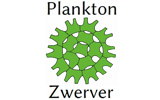Bibliographic Detail
Olszyński, R.M., Górecka, E., Trobajo, R., Gastineau, R., Ashworth, M. & Mann, D.G., 2025
Reference:
Olszyński, R.M., Górecka, E., Trobajo, R., Gastineau, R., Ashworth, M. & Mann, D.G. (2025). Taxonomic review of Tryblionella with special reference to the Apiculatae group—New characters of genus Tryblionella sensu stricto (Bacillariaceae). Journal of Phycology 61: [1–23], 10 figures, 2 tables.
Publication Date:
"First Published: 18 March 2025"
Abstract:
Tryblionella (Bacillariaceae) was described by Smith in 1853, and for many years, the diagnosis of this genus was questionable. Recent molecular analy- sis based on the rbcL gene marker suggests that Tryblionella is a polyphyletic genus with T. apiculata, T. hungarica, and T. gaoana forming a distinct group from other Tryblionella representatives. Therefore, this study aimed to clarify the diagnosis of Tryblionella as a genus. The focus of this study was a selected group of species previously categorized within Grunow's section Apiculatae, which includes the type species T. acuminata. This classification serves as a foundation for conducting morphological and molecular comparisons with taxa of Tryblionella sensu lato, which are likely to represent distinct and highly diverse genera. Our review includes a detailed examination of frustule ultras- tructure and ontogeny combined with a new molecular phylogenetic analysis derived from a three-gene concatenated dataset. The results of our research indicated that among Tryblionella, several monophyletic groups of taxa can be distinguished, including Tryblionella sensu stricto (s.s.), by three key char- acters: a porose valve cross-section; longitudinal valve undulation, where the peak of the undulation is located on the proximal side of the valve; and the presence of an axial sternum with thickened and relief virgae. Tryblionella s.s. taxa share a similar girdle structure: The girdle is graded, except that the first band bears a single row of poroids in the pars exterior and a crenulate margin on the side corresponding to the distal valve mantle.
DOI:
https://doi.org/10.1111/jpy.70004
















